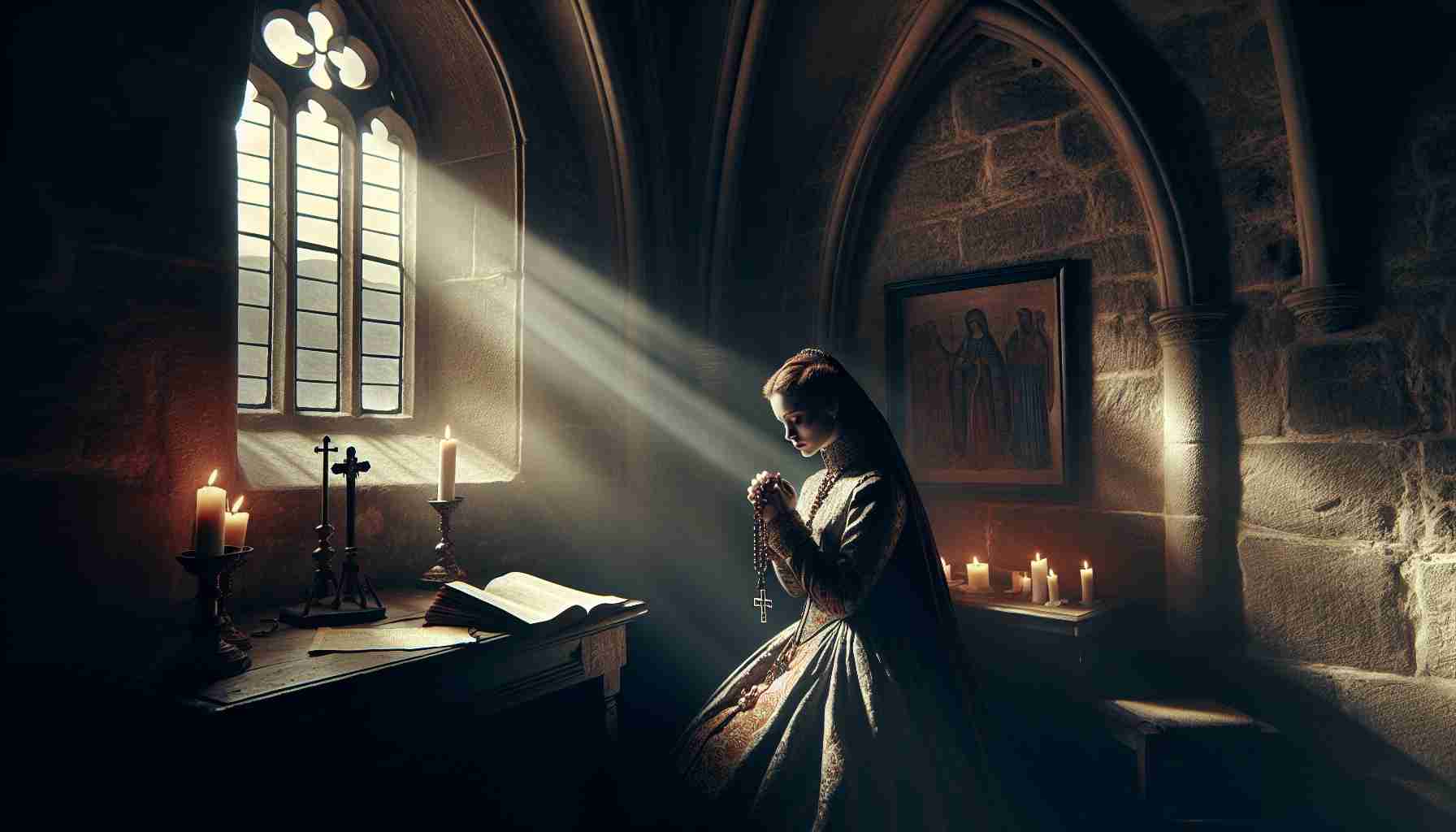

The rain marched down the leaded glass of Lochleven Castle like the footfalls of judgment, endless and cold. Within its stone walls, Mary Stuart, Queen of Scots, knelt beside the narrow window in her chamber, her hands clasped tight over her Rosary. The crucifix, worn smooth by devotion, nestled in her fingers as she whispered verses that once had lifted coronets above her head and now served only to steady her trembling heart.
“Cast thy burden upon the Lord,” she murmured, voice a breath against the shuttered wind, “and He shall sustain thee; He shall never suffer the righteous to be moved.” Psalm 55:22 had become her anchor in the shifting tides of treachery and regret.
She had entered her captivity in June, but on this July morning of 1567, her fate was no longer held in suspense. The parchment on the oak table, sealed with wax and the cold consensus of Scottish nobility, waited like a pall. They had come with swords drawn not of steel but of ink, and Mary, a daughter of kings and queen of two nations, would soon become sovereign no more.
Through the haze of grief stood her half-brother James, Earl of Moray. Though they shared blood, his heart had dried toward her like scorched heather in sunless moors. He bowed before her out of courtesy more than affection. He had long courted Protestant sympathies, and the nobles had chosen him, her regent, the guide of her infant son James VI—raised not in her Catholic faith but in the new doctrines of Geneva.
"Sign, my lady," said Lord Lindsay, extending the quill like a blade. “For your son. For Scotland’s peace."
Peace had ever eluded her—since she’d returned from France, widowed and burdened with a crown too heavy for her youth. Her rule had been a storm: plots, marriages, betrayals brewed faster than Parliament could convene. Some called her foolish. Others called her Jezebel.
But Mary knew herself. She was no saint, but neither was she the harlot the Kirk painted in sermons.
Her gaze touched the crucifix again. Faith, not throne, had steadied her these many weeks. At night, she’d imagined the saints walking the battlements, whispering prayers where no priest dared tread. She remembered Mass at Holyrood Abbey, incense curling like hope under vaulted stone. How foreign that sanctuary seemed now compared to the damp cell of Lochleven.
“The Lord is my vindicator,” she whispered, and took the quill.
The signature trembled. "Mary, R." That final flourish bore the weight of dynasties.
Silence fell. Even the wind seemed to bow in awe or sorrow.
Years passed. Mary escaped Lochleven, cloaked under moonlight, but never reclaimed her throne. Betrayal followed her like a shadow into England, where her cousin Elizabeth kept her behind thicker walls.
Faith, however, could not be imprisoned. In the cold chapel of Fotheringhay Castle twenty years later, she accepted her death with grace. A crucifix in one hand, a Psalter in the other, she went to the block in crimson—the color of martyrdom.
But long before her beheading, her true sacrifice had been made here—in the austere stone chamber overlooking the loch. To sign away a crown is not the act of a coward, but of one who sees beyond this world. She lost a kingdom but did not lose her soul.
Psalm 55:22 had promised the faithful would not be forsaken.
And in that silent room, where the seal cracked and history turned, heaven alone bore witness to the queen who surrendered all—with hands clasped in prayer.